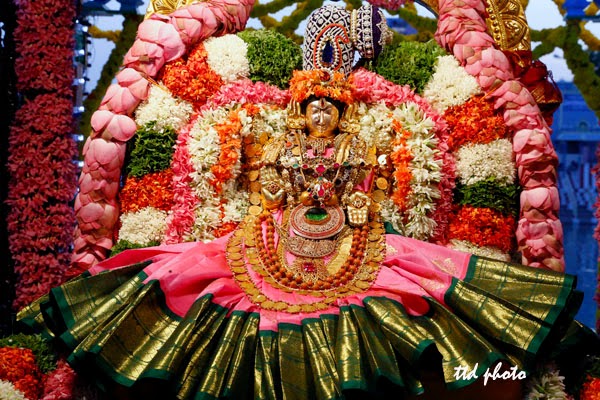Ashtadikpalakas In Service of Brahmotsavams The Ashtadikpalakas are eight in number. As their collective name suggests, they rule the eight quarters or the eight directions of the universe. Ashta means eight, “dik” means quarters or directions and” pālaks “means rulers. According to Padma Purana, long long ago at the time of starting Kaliyuga, sacred Narayanadri Read More
Tag: Dwajarohanam
Before the start of vahanams, Dwajarohanam (hoisting the flag of garuda) will be done.
The Divine Vahanas of gods and goddesses
– Smt. T.S. Rajalakshmi Divine Vahanas Vahana in Sanskrit means “that which carries,” a vehicle for Gods and Goddesses. All Gods and Goddesses have their vehicles (Divine Vahanas or Vahanams). The vehicle may be a bird or an animal. Yet, they too are considered with high respect and offered prayers. They become vehicles to serve Read More
Ashtadikpalakas – The Gods of 8 Directions
Ashtadikpalakas In Service of Brahmotsavams The Ashtadikpalakas are eight in number. As their collective name suggests, they rule the eight quarters or the eight directions of the universe. Ashta means eight, “dik” means quarters or directions and” pālaks “means rulers. According to Padma Purana, long long ago at the time of starting Kaliyuga, sacred Narayanadri Read More
BRAHMOTSAVAMS IN TIRUMALA
“Venkatadri Samam sthanam Brahmande Nasthi Kinchana” Annual Brahmotsavams There is no sacred place in the Brahmanda like ‘Venkatadri’. Out of all pilgrim centers throughout the world, ‘Venkatadri’ is being considered as a unique place. Since the advent of Lord Venkateswara as ‘Swayambhu’ in Tirumala, the ‘Annual Brahmotsavams’ are being celebrated for nine days in the Read More
Padmavati Devi
GODDESS PADMAVATI DEVI The sacred bath ‘ABHISHEKAM’ is performed to Goddess Padmavati Devi on Fridays. All the rituals and pujas offered to Ammavaru are as per the procedures of ‘PANCHARATRA AGAMA’. Goddess Mahalakshmi immersed herself in penance and emerged as ‘SRI PADMAVATI DEVI’ from a Lotus located at the center of Pushkarini (holy pond) on Read More




